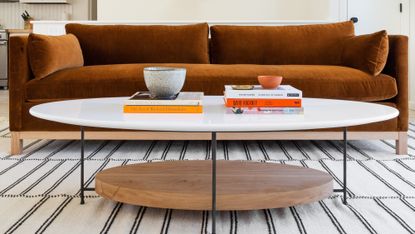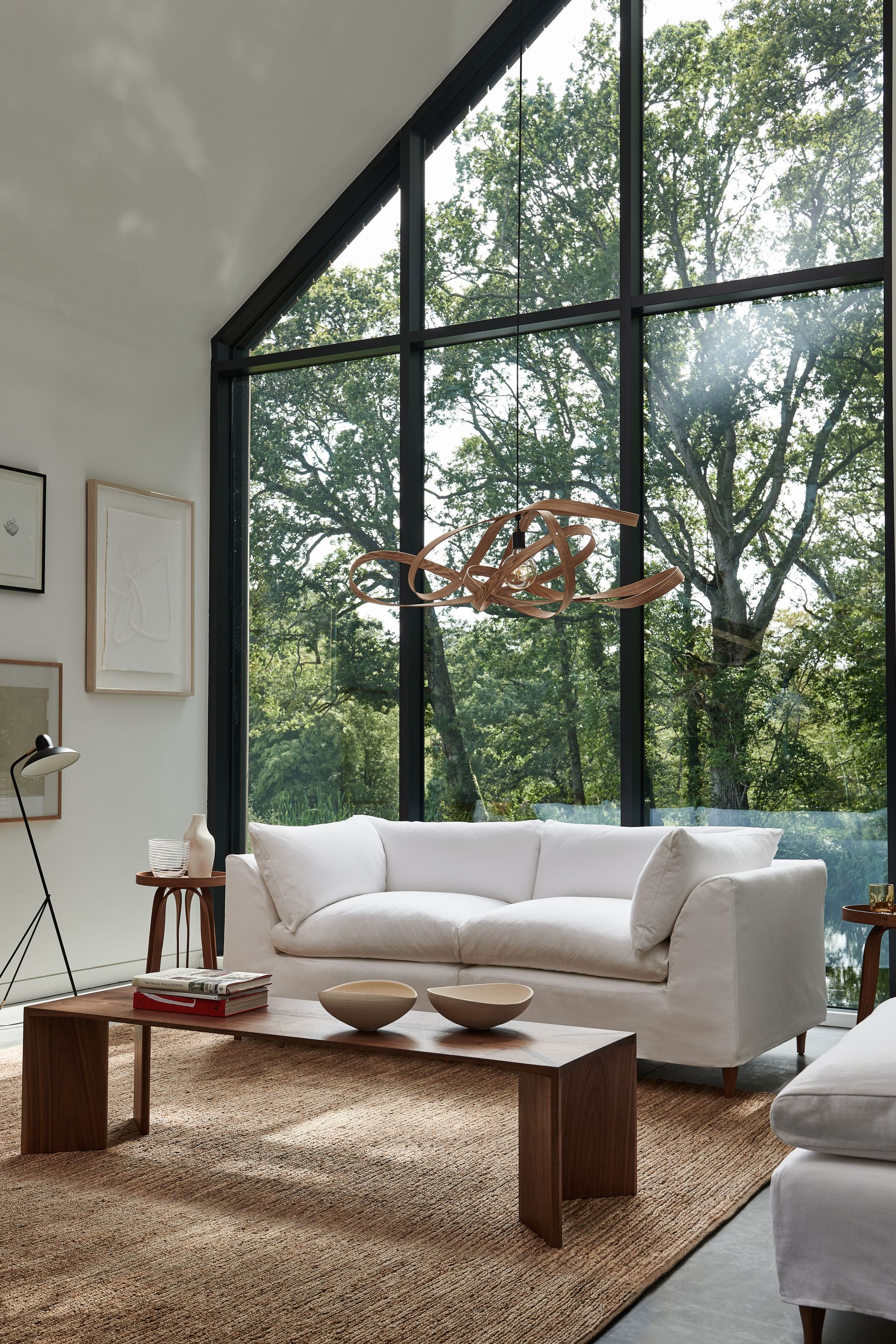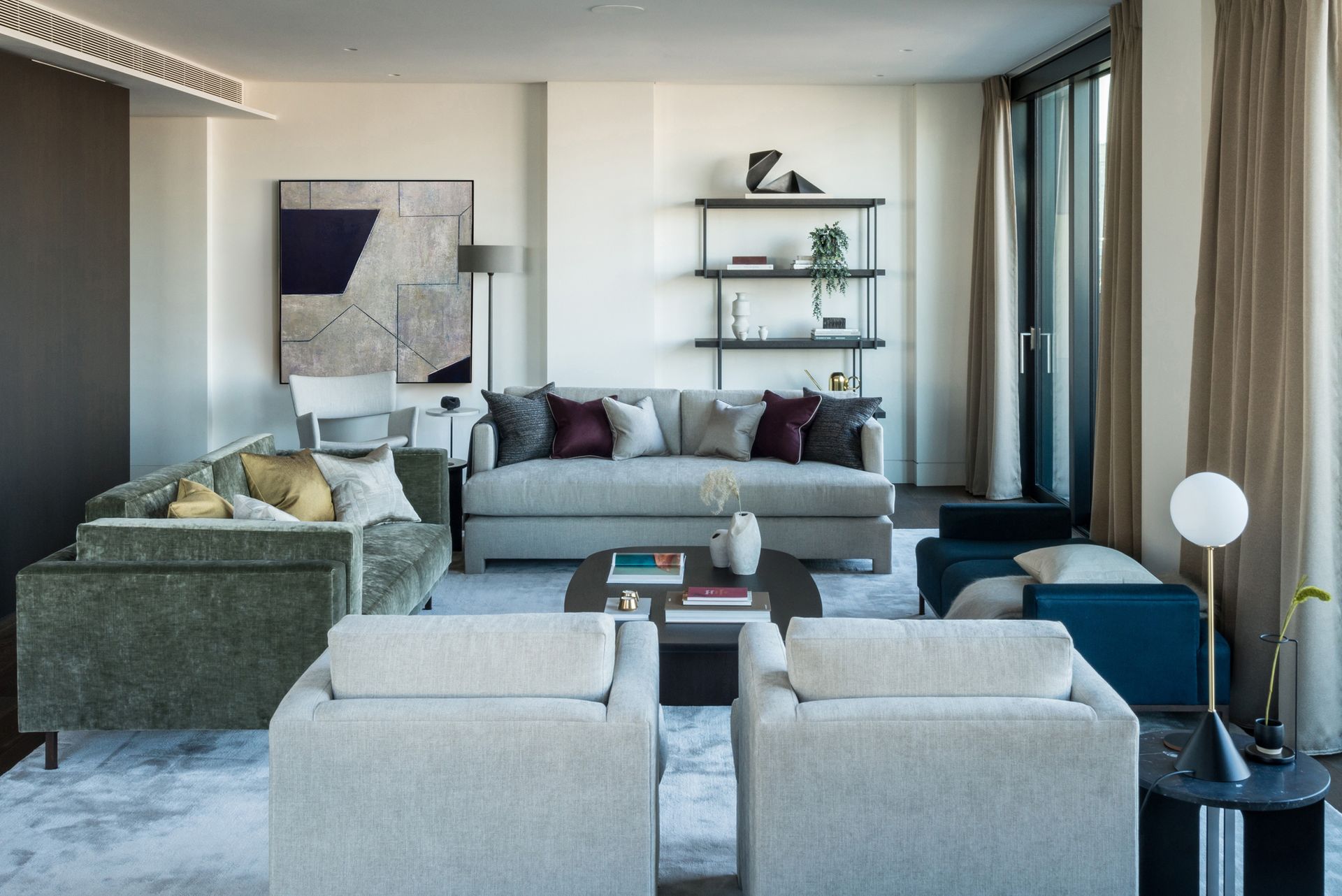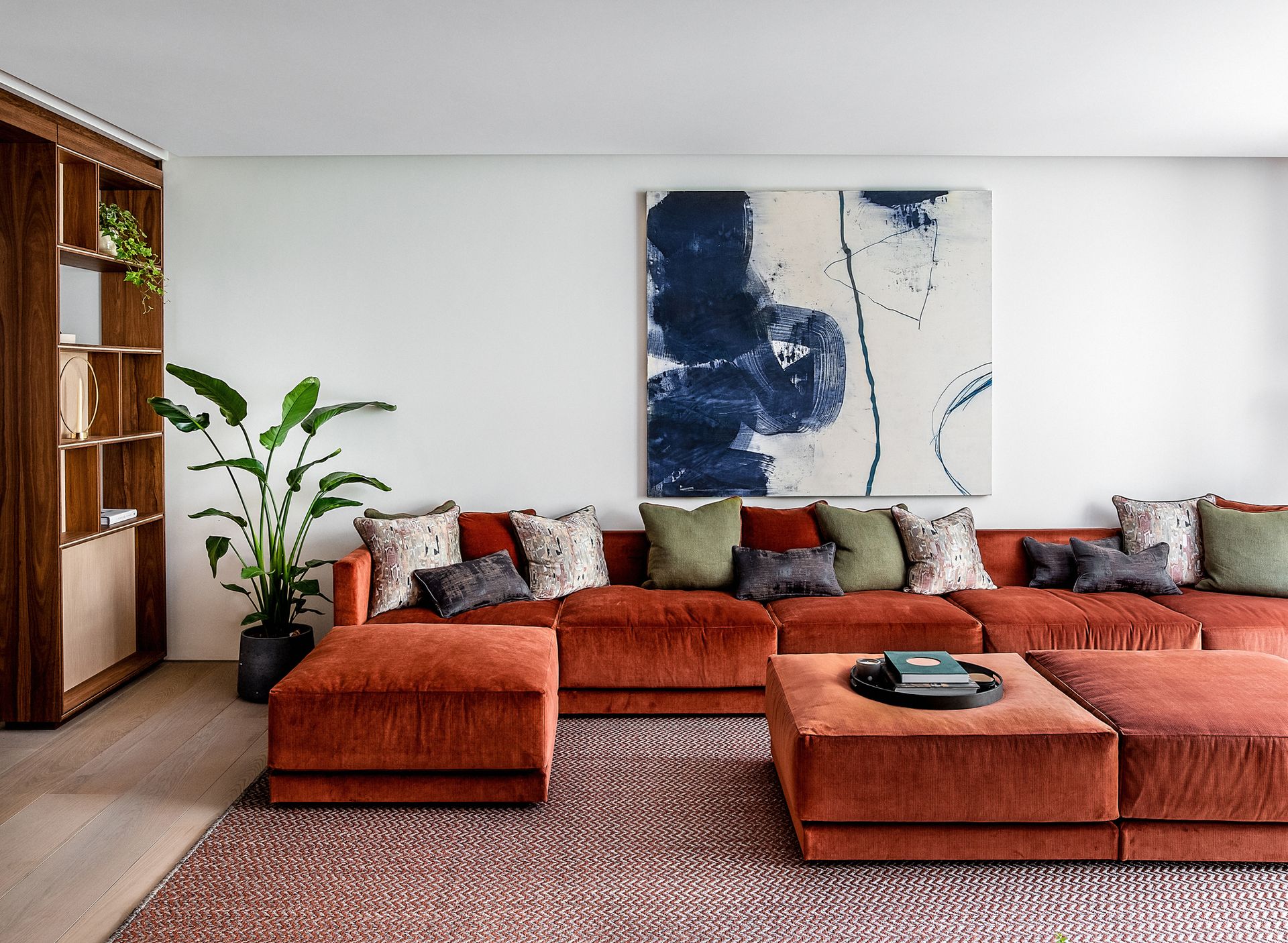Sofa dimensions – experts explain how to choose the perfect sofa size for your room
Discover standard sofa dimensions and follow these top tips for picking the right size and for getting it through the front door


Getting your sofa dimensions right for your home can throw up real challenges and obstacles. Your sofa is a real focal point of a living room. It's a place for unwinding, cozying up with friends and family, and when picked well, it can make a real impact on your interior design.
There are, however, key considerations to bear in mind along the way to ensure you get the sofa buying process right. Is the sofa the right shape for your designated room? Does it overwhelm the space? Is your sofa size large enough to seat everyone at once? These are all questions that must be addressed before your purchase your sofa, not to mention the issue of whether it will fit through the front door or up those stairs.
‘When you find a sofa you love, it creates a showstopper and the rest of the design follows,’ says interior designer, Natalia Miyar, ‘but don’t forget proportions.’ For those looking for living room furniture ideas and a guide to buying this big ticket item, we delve into the main considerations to make the sofa buying process, a smooth one.
What are standard sofa dimensions?
A standard sofa can measure anything in between 68 inches and 96 inches long, but the most common size is 84 inches which typically seats three people. Designed to seat two people, loveseats, or small sofas, are shorter and are typically around 59 inches on average.

Length isn't the only measurement to take into consideration when sizing up your sofa. Think about the height of your sofa in the room, taking into account low ceilings or dado rails. A sofa typically ranges from 26 inches - 36 inches high. Think also about the seat depth and seat height.
Standard sofa depth from the back of the sofa to the very front is around 35 inches. The depth needs to be considered so as not to purchase something to deep and overwhelm the space, or something not deep enough that you can't relax into properly.
How to measure a room for sofa size

As well as the sofa measurements, always measure the length and width of your room. This will give you an indication of how much space you have to play with. Your sofa should take up no more than two-thirds of the room length to stop it from overwhelming the space. ‘It's imperative to measure out the walls and flooring with a tape measure and masking tape,' encourages Samuel Pye, creative manager at interiors studio Echlin, 'particularly if you don't have a designer to help.
'With these sofas also think carefully about how else you want to use the room and where you want to put down a glass of wine or cup of tea as these sofas can often dominate and, if large enough, leave you marooned in the center of an upholstery wonderland unable to reach the popcorn.'
When measuring, consider your radiators, dado rails and shelves too, measure the height to see if your sofa can pass above or under these obstructions upon entry. Any wall panels might create an unwanted gap between the sofa and the wall.
How to make sure you can get your sofa through the door

Remember that the sofa will have to pass through tight doorways and awkward corners, and this can often be a cumbersome task, especially for small living rooms. Sometimes, your sofa just won't fit, and many sofas end up returned to the manufacturer because of this reason. Make sure your sofa isn't one of them by plotting every inch of the sofa's journey to its designated room during the buying process.
Essentially, the height of your sofa needs to be smaller than the narrowest section it will travel through. Measure every part of the route your sofa will take. Don’t think it will squash down if it’s taller than the hallway is wide. It won’t. A sofa's height is usually shorter than its total depth, so you might need to rotate your furniture 90 degrees to get it through that stubborn doorway.
You might also be able to disassemble your sofa. The best sofas often have detachable legs and other elements that could make all the difference. Remember to cover with bubble wrap to avoid scuffing your brand new sofa before it's even got to its destination.
How to measure for a corner sofa

Corner sofas can make for an ideal solution for a large family home, accommodating more people all at once, which has made them an enduring sofa trend. Measuring corner sofas is a little trickier as you’ll have to take note of more dimensions, such as the depth of the corner seat and the other seats too, as well as the height and the width of both sides. They come in all different shapes and sizes, some being left-hand or right-hand sofas, so make sure you look at the walls you intend the sofa back to sit against and measure these too.
The height of a corner sofa is typically the same all the way around. If yours has varying heights, measure the tallest part to determine if it will fit through a doorway.
L-shaped sofas typically come in broken-up elements, so you'll be able to move pieces of the sofa in separately and piece the whole together once you've got them all indoors.
Consider the size of sofa legs, arms and backs

The sofa arms and legs are also factors to take note of when considering sofa size. When thinking about legs, the choice can be raised off the ground or hidden entirely. Visible sofa legs raise the seat of the piece off of the ground and help to give sofas a lighter feel. Meanwhile, sofas that are flat on the ground with no feet on display make the sofa appear more like part of the architecture of the room. 'When considering legs it's good to remember that high legs are useful in a smaller space as you see more floor giving the illusion of a larger room,' says Abi Boura, creative director at furniture brand, Love Your Home.
The arm on a sofa is another important consideration when it comes to interior design. And there are many different options and styles to pick from, from sock arms, to shelter arms. Think about how you use your sofa arm, is it a place for leaning or resting a cup of tea? Or do you want them immaculate in a more formal setting. Whatever you opt for can have a big impact on comfort and style. 'A thinner arm can create more internal seating and look beautiful and considered. A bigger arm is perfect for a larger space and will look more sculptural,' adds Abi.
The sofa back you choose is dependent on how formal or relaxed you want your sofa to look. A fixed back is usually more formal, scatter backs are more relaxed and cushions are a good option for something in between.
Thinking about sofa style

A sofa isn't always rectangular shape, so consider what the sofa will be used for when deciding on style. ‘In a family room, you may want a large snuggly sofa with multiple footstools,’ says Alex Willcock, founder of Maker&Son. Opt for an L-shape which can accommodate more people and scroll arms for resting. For a cocooning snug, an all-enveloping loveseat with scatter cushion back and flat arms will create a feeling of cosiness. For a formal space, an upright sofa with a fixed back and thin arm will reflect the room’s purpose. ‘It might make sense to have traditional details like turned wooden feet or brass castors,’ adds Samuel.
A curved sofa can work for a larger living room. ‘A curved sofa can help to define an area and will work in open-plan spaces as the back of the sofa is a design feature in itself,’ says Natalia Miyar.
A curved sofa gives an impression of airiness and should sit away from the wall, floating in the middle of the room, so that it can be admired from both the front and back. Use accent chairs around your curved sofa to highlight the crescent shape, and repeat the curves with an oval-shaped coffee table to complement it.
Opt for a sectional sofa

Sectional sofas are made up of a series of moveable sections and parts which can be good if you are lacking space or accommodating for a family that will be growing and changing with people coming and going. Coming in sections, modular sofas are put together in any way you like. Frames are flexible and can be adapted to fit any type of space. They're also handy for squeezing through the front door.
Be The First To Know
The Livingetc newsletter is your shortcut to the now and the next in home design. Subscribe today to receive a stunning free 200-page book of the best homes from around the world.

Oonagh is a content editor at Livingetc.com and an expert at spotting the interior trends that are making waves in the design world. Writing a mix of everything and everything from home tours to news, long-form features to design idea pieces on the website, as well as frequently featured in the monthly print magazine, she's the go-to for design advice in the home. Previously, she worked on a London property title, producing long-read interiors features, style pages and conducting interviews with a range of famous faces from the UK interiors scene, from Kit Kemp to Robert Kime. In doing so, she has developed a keen interest in London's historical architecture and the city's distinct tastemakers paving the way in the world of interiors.
-
 These 12 Best Table Lamps for Your Desk — Perfect Glows for a Creative Home Office
These 12 Best Table Lamps for Your Desk — Perfect Glows for a Creative Home OfficeThe best table lamps for your desk is have a soft, targeted glow. Elevate your WFH set-up with these stylish picks endorsed by Style Editor Brigid Kennedy
By Brigid Kennedy Published
-
 The Nespresso VertuoPlus is 30% Off for President's Day, and it's Kim Kardashian's Coffee Maker of Choice
The Nespresso VertuoPlus is 30% Off for President's Day, and it's Kim Kardashian's Coffee Maker of ChoiceThis sleek and stylish coffee maker was spotted in Kim's home bar, and you can currently save $60 if you buy yours from Amazon
By Lilith Hudson Published

